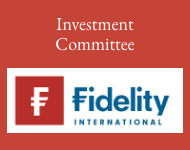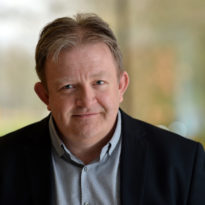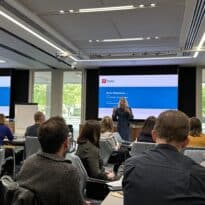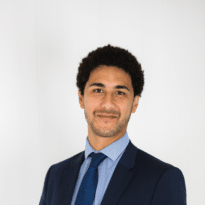In retirement clients ideally need steady income at lower volatility, with potential for capital growth. Rob Kingsbury spoke to Jason Borbora-Sheen, co-manager of the Ninety One Diversified Income Fund, about how the fund approaches delivering on all these fronts.
With bonds and equities having been through periods of high correlation in recent years, the Ninety One Diversified Income Fund is actively managed, using an alternative multi-asset strategy, aimed at delivering a steady income, capital gain and at lower volatility than expected of an equity fund, co-manager Jason Borbora-Sheen explains. This could make it a useful addition to a portfolio looking to deliver income in both centralised investment and centralise retirement solutions, as well as helping mitigate against sequencing risk.
Run by Jason and fellow manager John Stopford since 2012, the £781.1m fund sits in the IA Mixed Investment 0-35% shares sector. It aims to deliver a 4% yield. Over three years it has annualised volatility of 4.9 and has returned 6.1%*. It is risk rated 3 by Defaqto and 4 by Dynamic Planner.
Jason, studied law before becoming an intern at Bank of America, moving to the asset management side of BlackRock, and then joining Ninety One in 2015.
The smaller environment of the asset house appeals to him more, he says. “It’s about running the strategy and engagement with clients, and less about how you manage the business. It’s empowering people to be entrepreneurial around that, which I think partly is the result of the heritage of the firm but it’s also the number of people that we employ versus the number of assets we’re running, meaning we have to run a bit harder. It’s the sort of climate that I’m comfortable with, and it’s a fantastic place to learn.
“Our teams are very engaged with one another. As a business we are entrepreneurial and that requires you to work with others to achieve success.”
In addition, he says, he and co-manager John Stopford, are part of a broader income capability, within the firm. “We engage around the business on corporate exposure, government bond exposure, emerging markets exposure and equity exposure, and we bring that into our process.
“If someone’s covering an equity or a bond we’re interested in, we can talk to them and get a base level from which we can then make a decision.”
The team can also call on product specialists, who “are focused on translating what we’re doing into the uses that a client will have for our fund. So as managers, we can be very focused on whether gilts are going to under or outperform US bonds, but the specialists are much more focused on how we make that something that can be put into a portfolio.”
The strategy of the fund, Jason says, was designed to replace traditional fixed income, “to be something quite different”.
“If you think about people’s route towards retirement as climbing up the mountain, as they are accruing assets, and then coming back down it as they retire, ultimately, the latter journey is very, very different from the former.
“The skills that you need and the tools you use will differ. It’s the journey from a centralised investment position into a centralised retirement one, recognising that they are very different.
“For us, it’s highlighting the importance of income within that and having an appreciation of the volatility of income versus the volatility of capital.
“Our fund’s heritage is in providing a smoother journey than traditional defensive assets would.
“When people talk about investing in a bond, what they expect from it is typically a low volatility, certain journey that is income driven. When we started our strategy, we believed that fixed income, in its traditional sense, was going to be less able to do that, both because yields were much lower and also because there was a change to the structure of investment markets themselves. There was a lot of central bank direct involvement in both equities and bonds, and then a change towards more passive investment vehicles and strategies.
“That meant that assets could move in the same direction, where historically they were less likely to do so. When you buy something defensive, the last thing you want is to see that it’s become something that’s actually quite offensive, in the sense that your capital volatility is much higher and your risk of loss is increased.
“What we want as the outcome for our clients, is a smooth capital journey and a smooth income journey, in a defensive context, with traditional building blocks.”
Portfolio make-up and sequencing risk
Between 80% and 90% of the portfolio can be in very high quality fixed income asset, typically sovereign bonds. The duo then add in other assets “which are bond-like in their nature, but might be classified as an equity. As an example, an infrastructure fund in the UK. This is income driven, essentially an index-linked bond, when you think about the revenue stream being linked to the government, often with an inflation beta.”
Jason believes the fund works for clients both in accumulation and cumulative strategies, as an alternative or replacement for fixed income. “We’ve positioned it so that it can sit alongside a smoothed capital fund, for example, giving clients a predictable income stream alongside a predictable growth stream.”
Regarding the income stream, Jason says the fund is driven by yield. “We focus on the natural income available to us, from solid investments. Our philosophy is to find things which have got a higher than average level of yield, but not so high that it’s going to impair the capital. The capital stream should either remain stable or grow. And then through time, it’s that capital and its stability which is going to generate you that stable income stream.”
The fund has been delivering in some very different environments, and it’s been consistent in its defensiveness, he adds. “We’ve gone through a number of different cycles in a fairly short space of time, with events like Brexit, Covid and the war in Ukraine.”
The volatility driven by such events can have a massive effect on retirement incomes derived from capital, most notably in the first few years of retirement. The fund seeks to help reduce sequencing risk and maintain a steady income stream in all environments.
Jason explains: “Anyone who invests has to be prepared for some degree of volatility. But if you’re a defensive investor, you want that to be reduced. The idea is that your capital should, at any time, try to be vulnerable to much less capital loss than a traditional asset.
“I think we’ve ticked that box. If you look at our rolling profile, the yield has been very consistent at between 4% and 6% on average.
“And the fund has always behaved in a much less volatile way than bonds. It’s about a third of the volatility of the fixed income market, and that, I think, is pretty useful for people who are thinking about their journey down the mountain.
“For those entering retirement, when they’re no longer accumulating wealth, the anti-compounding effect of a market event on capital can be so dramatic that ultimately they can end up in a position where they’re not getting enough income to service their needs.
“When you enter that point of needing to rely on the existing assets and how much income, they can earn you, what you really want is your capital to remain stable, and your income to come through each time.
“They need to work together for that to function. And that’s where the fund plays its role. It gives that reliability, and it can really improve the risk and reward within a portfolio.”
Digging deeper into the fund
There are three key characteristics of the fund, Jason says: duration, its sensitivity to moves in interest rates; its credit quality, which is A+; and the yield, which at time of writing is around 5.5%.
“Most of the fund’s bond exposure is in the US. We do like US assets generally. They are high quality and the institutions are reliable. You’ll have days like the around election where bonds move quite erratically, but ultimately we’ve had a much smoother journey in US Treasuries than we’ve had in gilts.”
While the US is the largest region in the fund, it only accounts for roughly half of the overall bond exposure, Jason says. “We have a lot outside of it, in places like New Zealand and Australia, where there are also quality bonds, double A rated, and equally high incomes available.”
The managers also look to participate in the markets through buying call options. “For conservative investors, this gives you this quite nice payoff, whereby when the equity markets rally, you get some of that upside. When they fall, you get a bit less of the downside.”
With hedging they look to minimise losses in the fund. “We’re not trying to look heroic and make money when markets go down, because obviously the risk is that you end up going down when markets go up if you do that. But you can try to mitigate how much you lose when things are looking bad. It’s about being prepared.”
Having a nimble approach
Fundamental to the fund, Jason says, is having a nimble approach to how they invest and what they invest in.
“I think one of our distinct advantages is not being bound to what things are called, but looking instead at how they behave. If we look at an infrastructure fund, it might be called an equity, but that doesn’t mean we can’t treat it like a bond if ultimately we think it’s got those compelling characteristics.
“That’s partly related to being willing to also change how you think things will behave. So you know how assets have done but what if bonds behave more like equities? Managing both those risks with a degree of agility is important.
“For investors who are looking for an income driven return with low capital variability, I think we provide a useful addition to a portfolio.”
* Sources: Ninety One and Trustnet.































